The Life Plan (29 page)
Authors: Jeffry Life
Tags: #Men's Health, #Aging, #Health & Fitness, #Exercise, #Self-Help

Reduced risk of falling
A FLEXIBLE MAN IS A SEXUAL MAN
Active vigorous sexual function is like any other athletic activity—the more strength, endurance, and flexibility you have the better you are at it. You can have great erectile function, but if you lack strength and endurance and your joints don’t move very well, you will fail as a lover.
The Life Plan Flexibility Workout
In this book I have included two flexibility modalities: Self Myofascial Release (SMR), which should be done
before
resistance training
after
you have performed a brief cardio warmup, and Static Stretching, which should be completed
after
your total workout is done. You will be performing all of the flexibility exercises listed to ensure you have a comprehensive stretching program.
before
resistance training
after
you have performed a brief cardio warmup, and Static Stretching, which should be completed
after
your total workout is done. You will be performing all of the flexibility exercises listed to ensure you have a comprehensive stretching program.
Self Myofascial Release
Fascia is the soft-tissue portion of the connective tissues and provides support for most tissues in the body, including the muscles. This soft tissue can become restricted due to trauma, injury, overuse, or inactivity, causing pain and tension. It can also limit the ability of the muscles to have proper blood flow. As in most tissue, irritation causes localized inflammation, which also leads to pain. Worse, chronic inflammation results in fibrosis, or the thickening of the connective tissue, and results in reflexive muscle tension that causes even more pain and inflammation. Myofascial techniques aim to break this cycle.
The technique I use for myofascial release is called “foam rolling” and requires that you purchase a foam roller at any sporting goods store. You will then place the foam roller under each muscle group until a tender area is found, and maintain pressure on the tender area for 30 to 60 seconds. This will result in releasing the fascia and softening and lengthening the muscle. It will help break down scar tissue and allow the muscles to reach optimal levels of lengthening during exercise.
You will complete each of the following nine positions with the foam roller, holding each one for 30 seconds. If you experience muscle tightness during any of these, repeat that position for an additional 30 to 60 seconds.
AREAS FOR FOAM ROLLING
Inner thigh
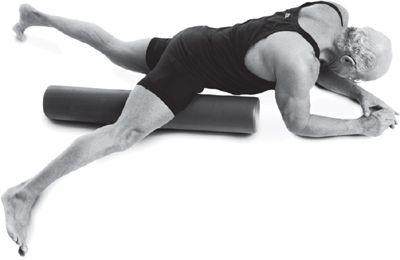
Calves
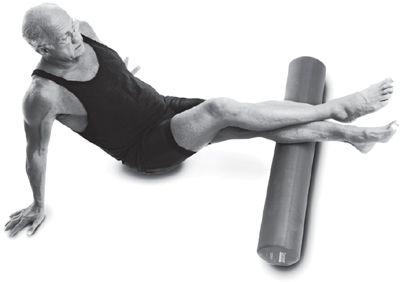
Back (upper)
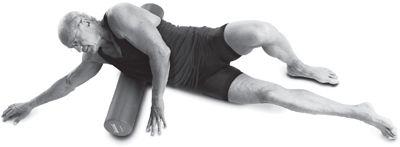
Quadriceps
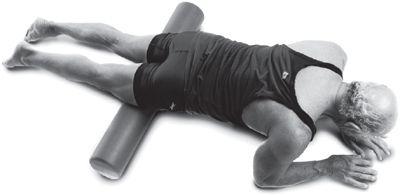
Outer leg (lying on side)
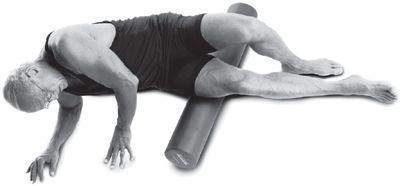
Hamstring
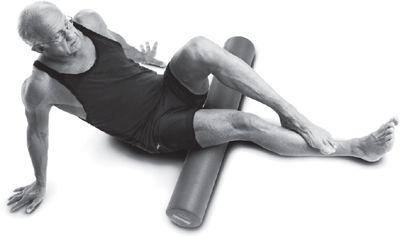
Peroneals (lower leg)
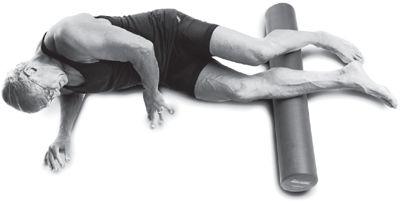
Midback

Gluteus

Static Stretching
This program is designed to stretch each of the major muscle groups so that you will be able to take each joint through its full range of motion. These exercises are best done after completing both your resistance training and your cardio workouts. If you have chronic muscle pain or stiffness in a particular area, such as the lower back, you will need to make sure that you complete those stretches that target that area at least three times a week. For example, I stretch my hamstrings and hip flexors every day.
Each of the following static stretch positions should be held for 20 to 30 seconds and then repeated with a complete relaxation of the muscle between repetitions. The stretches should be done in a gentle and relaxed motion, moving just to the point where you can feel a stretch in the muscles you are working, and not in the other muscles that you are not working. For example, if you are stretching your calves, you should not feel a pull in your back. Do not bounce during stretching.
Be patient during your stretches and do not force joints to go farther than they want. Severe pain while stretching is a signal that the stretch has gone too far. Mild to moderate pain during a stretch indicates you are doing the stretch properly to make advances. There should be no soreness the next day after a stretching routine; if there is, it is an indication that you have overstretched and should lower the intensity of stretching the next time you perform the exercises. This can be done by not stretching the muscle so far or by not holding the stretch as long.
Breathe slowly and never hold your breath while stretching. Proper breathing helps to relax your body, increases blood flow throughout your body, and helps to mechanically remove lactic acid and other by-products of exercise.
CORRECT POSTURE DEVIATIONS
For optimum balance and neuromuscular efficiency, you need to work continually at achieving good posture, muscle balance, flexibility, core stabilization, and good strength throughout your body. The best ways to correct postural deviations is by using a combination of static flexibility exercises and Self Myofascial Release (SMR). If you continue to train your body without correcting postural deviations it will be impossible to perform exercises with proper technique. Worse, it will increase your likelihood of getting injured.
Other books
Daughter of the Loom (Bells of Lowell Book #1) by Peterson, Tracie, Miller, Judith
La comerciante de libros by Brenda Rickman Vantrease
Fair Play (All's Fair Book 2) by Josh Lanyon
The Swap - Second Chances: Second Chances by Hart, Alana, Claire, Alana
Cliffhanger by Wilson, Jacqueline
Dead City by Lee J Isserow
Grid Attack (Cyber War #2) by Emerson Hawk
A Way (The Voyagers Book 1) by Tara Lutz
Armageddon Rules by J. C. Nelson
